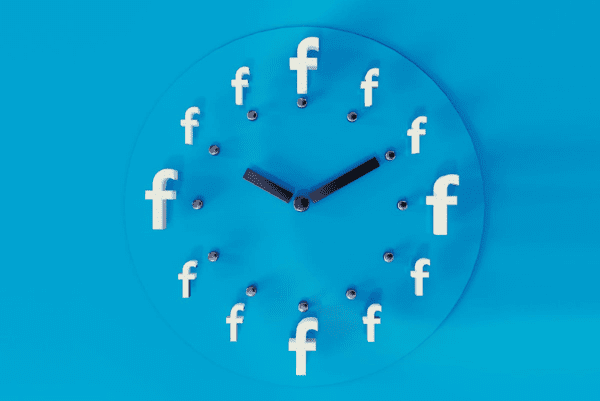
The Internet is flooded with efforts to answer the apparently simple question of when a person should post on Facebook to achieve maximum engagement.
As we all know, Facebook is one of the best social media platforms in the world. There are chances that your audience is online at any time of the day. Some days and times, posts get better engagement than others on each social media platform.
If you have a Facebook business page, you should know that the organic reach is decreasing on the platform. The average organic reach on Facebook is 2.2%, which simply means that if you have 1,000 followers, only 20 people will see your new posts and updates.
By posting content at the right time, you can increase the number of people who see your post.
What is the best time to post on Facebook for better reach?
Before moving on, many people have done a study on the best time to post on Facebook, and there are infinite results. To find out the best times for you to post on Facebook, you will have to do research into your own followers and Facebook analytics, because for every social media marketer, the peak time varies on their account.
if you are interested in digital marketing click here
According to research, the universal best time to post on Facebook is
- 6:00 am to 9:00 a.m.
- 1:00 to 3:00 p.m.
- 9:00 p.m. – 11:00 p.m.
These times are most helpful, as this is when people have the biggest gaps in their schedule and are free to check Facebook or any other social media platform. The best thing is to post anything in the morning because that is the time when people are catching their news feeds. Lunch time is also great as it’s when people tend to have gaps in their schedules. People check what they missed over the day after working for many hours. People are mostly engaged with Facebook and check the rest of the posts, so night time is also good to post your content as people are free from their work.
How we can find out the best time to post on Facebook.
1.Post in your audience’s time zone, not yours.
Posting in the early morning at 6 a.m. to 7 a.m. is a good idea, as people scroll through their Facebook accounts as soon as they wake up. You need to schedule your post time according to the location of your audience.
If you have a large audience in a particular region, you have to create a separate Facebook page for that audience. This will allow you to post in their language.
2.Find out when your audience is most active.
Facebook usually priorities the most recent posts because people care about new things more than old ones.
When you post content when your followers are most active, you can surely increase your chances that your content will reach them. When Facebook algorithms detect that you’re posting when your audience is browsing through their feeds, it will show your content to the feeds of people who don’t follow you (yet). For Facebook, all you need to know is when your followers are most active.
3.Find and have a look at your best-performing posts.
After doing research on the active time of your audience, the next thing is to study the content you have posted in the past. Have a look at your social media reports and analytical tools to see the most successful posts. Check for posts that performed well-
- Awareness-posts that have high views.
- Engagement: posts that have likes, comments, and shares.
- Traffic-posts that got many clicks.
After doing this, look at the time and day of the week you posted this content, and see the pattern that forms and follow that.
4. Look at what your competitors are doing.
If you’re new to Facebook, you should check your competitors’ accounts to see what they are doing.
click here for digital marketing services.
Find out their high-performing posts and get an idea of what type of content your audience might be looking for. If you notice that your competitors post content on the hour (the :00 mark), You could always try to post at the :15 or :45 mark to be in front of them.
Always stay alert and keep your ears peeled for news related to your industry. You might learn new strategies worth incorporating, pitfalls to avoid, and opportunities to take advantage of.
5. Always check for changes.
People are using Facebook more since COVID and the flow of remote work in 2020. From scrolling through Facebook during lunch breaks to checking in between Zoom meetings, many things have changed. You should also change along with the target audience’s behavior.
You can look at your top-performing posts weekly to check if there is any data that can help us with insights to work on our strategy or posting timings. This trick is to consider time as an important factor as you look at your social media scheduling strategy.





